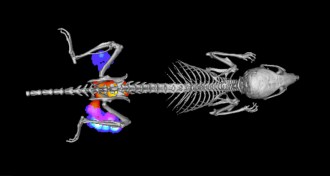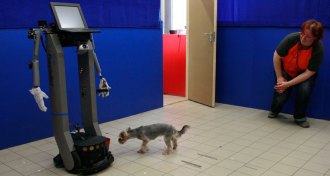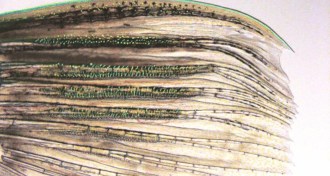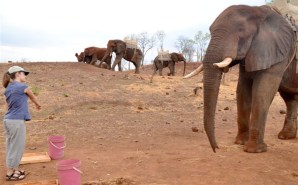Life
Sign up for our newsletter
We summarize the week's scientific breakthroughs every Thursday.
-
 Animals
AnimalsLurking males lead to hard-to-fertilize mouse eggs
Mixed-sex society raises resistance to sperm in what may be a long-running arms race between the sexes over fertilization.
By Susan Milius -
 Life
LifeScorpion genome decoded
An analysis of an arachnid’s DNA reveals how the animal survives its own venom.
-

-
 Life
LifeFlashy drug spotlights infection
Doctors may be able to watch for invading microbes with a fluorescent antibiotic.
By Beth Mole -
 Life
LifeBroccoli compound protects rats from lethal radiation
Treatment shields healthy cells from gamma ray attack but lets tumors die.
-
 Health & Medicine
Health & MedicineElectrodes dupe brain into feeling touch
Stimulating the right neuron at the right time gave monkeys the sensation of contact.
-
 Animals
AnimalsDogs pick up robots’ social cues
Dogs were more likely to pay attention to a PeopleBot robot — a machine with a laptop head and Mickey Mouse–style hands — after watching it walk, talk and shake hands with humans.
By Meghan Rosen -
 Genetics
GeneticsMale zebrafish sex tool stops fin regeneration
Tiny, spiked structures on the pectoral fins of male zebrafish help them hold females steady while mating. However, the structures produce a protein that seems to hinder the fish’s ability to regenerate fins.
-

-
 Anthropology
AnthropologyAncient farmers, foragers kept genes to themselves
Ancient DNA and diet clues suggest how farmers and hunter-gathers contributed to modern Europeans’ genetic profiles.
By Bruce Bower -

-
